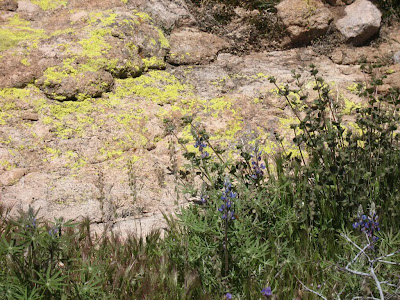
Ironically, I learned a lot about the liturgical year during our two-year stay in Belgium, which is considered by many to be a secular country. Although it is certainly true that the politics and general cultural atmosphere are trying to break away from their Catholic ties (our alma mater just removed the "Katholieke" from its title this year), there are remnants of the country's Catholic heritage almost everywhere you look. From the tolling church bells, to the hidden statues of our Blessed Mother in dark doorways, to the streets named after great popes and saints, the Catholic faith is built into the fabric of the architecture; the calendar and language are a saturating blend of Catholic motifs and symbols, as the pictures in this post, which are all our own, demonstrate. These secular societies are constantly bombarded from within by the sacramental character of their religious topography, no matter how hard they may try to forget.

Perhaps the most obvious remnant during our stay were the public holidays. I remember on this very day several years ago I walked a mile or so to the nearest grocery store, only to find that the doors were closed. Puzzled as to why Belgians would celebrate an American holiday, I walked back home, only to discover after an online search that today was actually "Whit Monday," also known as "Monday of the Holy Spirit," or "Pentecost Monday." Like Christmas and Easter, the Feast of Pentecost is actually only the beginning of an eight-day octave, and traditionally the Monday after Pentecost was also celebrated as an important feast. Even in this secularized country, the day was still remembered.
While some may lament the shreds of merely "cultural" Catholicism in countries, institutions, and even persons, they can also be viewed as a sign of hope, an indicator of the Spirit's ability to move in unexpected places. If a secular nation can contain these glimmers of hope, how much more should our dwelling, our way of living, the words we use be organically Catholic?
We pray today that the Spirit will enlighten our hearts and guide our homes, so that, as Christ promised, "When the Spirit of truth comes, He will guide you into all the truth."
Prayer for the Gifts of the Holy Spirit
Holy Spirit, Divine
Consoler, I adore You as my true God, with God the Father and God the
Son. I adore You and unite myself to the adoration You receive from the
angels and saints.
I give You my heart and I offer my ardent thanksgiving for all the grace which You never cease to bestow on me.
O
Giver of all supernatural gifts, who filled the soul of the Blessed
Virgin Mary, Mother of God, with such immense favors, I beg You to visit
me with Your grace and Your love and to grant me the gift of holy fear,
so that it may act on me as a check to prevent me from falling back
into my past sins, for which I beg pardon.
Grant me the
gift of piety, so that I may serve You for the future with increased
fervor, follow with more promptness Your holy inspirations, and observe
your divine precepts with greater fidelity.
Grant me the
gift of knowledge, so that I may know the things of God and, enlightened
by Your holy teaching, may walk, without deviation, in the path of
eternal salvation.
Grant me the gift of fortitude, so that
I may overcome courageously all the assaults of the devil, and all the
dangers of this world which threaten the salvation of my soul.
Grant
me the gift of counsel, so that I may choose what is more conducive to
my spiritual advancement and may discover the wiles and snares of the
tempter.
Grant me the gift of understanding, so that I may
apprehend the divine mysteries and by contemplation of heavenly things
detach my thoughts and affections from the vain things of this miserable
world.
Grant me the gift of wisdom, so that I may rightly
direct all my actions, referring them to God as my last end; so that,
having loved Him and served Him in this life, I may have the happiness
of possessing Him eternally in the next. Amen.









.jpg)











_Robert_van_den_Hoecke,_%281622-68%29_Musee_Municipal,_Bergues.jpg)






